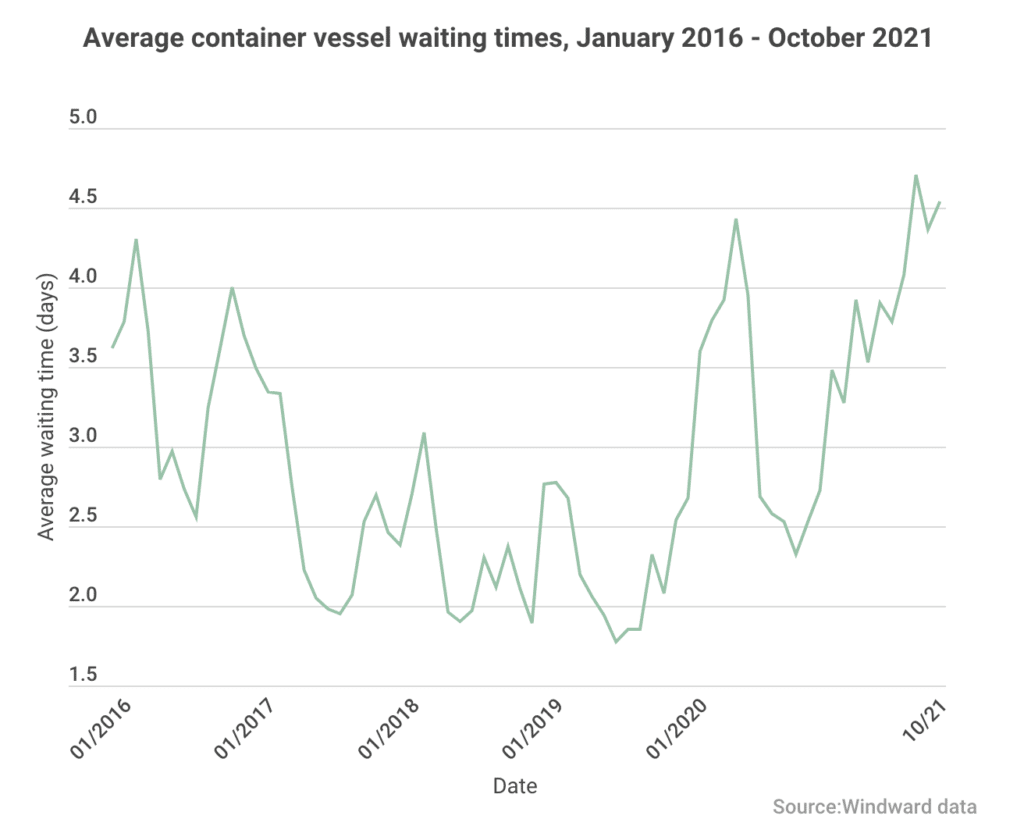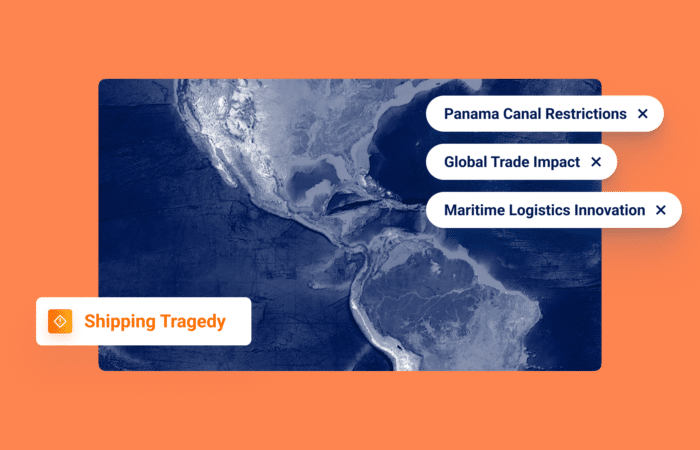What’s inside?
“It’s called supply chain because the chain is meant to be broken,” says Peter Sundara, Head of Global Ocean Product at Visy. We sat down with Sundara, who previously worked at Maersk, Agility, Flexport, and most recently was Vice President of Global Freight Management at Li & Fung Logistics, to discuss the challenges facing the ocean freight industry and what trends he thinks are here to stay. “Customers know that exceptions happen. It’s a given fact. But how do you then provide the solution to the customer to manage disruptions?”
For any stakeholder in the supply chain, it’s a hectic space to operate in — and that’s not taking the pandemic into account. This year, freight forwarders had to rethink disruptions.
“We always believe in planning and precision. This allows our customers to ensure their goods get to the market as planned,” says Sundara. But the pandemic rendered all efforts or strategies previously in place almost meaningless. He describes that port congestion is not unique. It happens. It’s part of the business. But when port congestions occur all at once, globally, that’s unique.
In this scenario, how can technology offer ocean freight solutions?
For example, if a port gets hit with COVID-19 cases — how can technology give freight forwarders the information to help them plan and give their customers an alternative solution?
As the pandemic wreaks havoc on the entire supply chain and disruption becomes the new operating standard, more and more businesses are looking at supply chain solutions. For example, Sundara describes that CEOs, COOs, and CFOs of freight forwarding companies are now joining customer calls – a never-seen-before, but now increasingly common, practice. In a disrupted market, supply chain solutions can go a long way in boosting revenue and growth.
There are two major ways that can technology can help freight forwarders better manage operations in this environment:
1. Ocean freight visibility to enhance customer service
Freight forwarders have to answer a number of questions once the customer books: Is the empty container released? Has the container been loaded at the terminal? Has the transshipment happened? Visibility is so critical for customers. And yet, freight forwarders don’t have their own tools to provide this. Freight forwarders have to depend on carriers to update their website in a timely fashion.
“If the carrier’s website is not updated on time, we are in trouble,” says Sundara.
To make matters worse, according to Sea-Intelligence, overall reliability is down more than 38 percentage points from nearly 80 percent a year ago. Container arrivals have deteriorated and this has a major impact on the service that freight forwarders can provide. This is what freight forwarders are up against as they work to deliver reliable and consistent service.
We took a look at our own data to understand how global container vessel waiting times have changed.

The graph above shows that container waiting times are at an all-time peak — higher than ever seen in the last five years.
Let’s say a freight forwarding company has decided to use a carrier — who with a higher rate, offers a faster transmit time. The freight forwarder sells that transit time to their customer, who is willing to pay a higher premium. Sundara describes, “I need that visibility for myself in that the shipment reaches its destination within the transit time because that’s what I’ve sold the customer.”
Any technology needs to help enhance the quality of service that freight forwarders can provide. And ocean freight visibility is mission-critical.
2. Automation to enhance employee productivity
From an operational point of view, freight forwarders depend heavily on manual work and processes. Take the example of Long Beach, where port congestion has resulted in a backlog of vessels and last-minute changes of terminals. Sundara describes, “what happens is that the whole documentation has to be changed, and it takes an army of people in the front office or shared service center to do that manually, especially when you have not invested in digital products. The result can be two or three days of delays. It’s a nightmare.”
The impact? Now more than ever, staff are feeling unprecedented burnout. Sundara asks, “How do you retain employees when everyone is working doubly hard and they don’t see the situation getting better in the next few months?”
According to the Wall Street Journal, the freight backlog has intensified strains in the industry. As of September, import volumes at Los Angeles and Long Beach ports were up 25% compared to 2020. As a result, staff are working harder, but not under better conditions. Meanwhile, the broader labor shortage has left openings for other jobs that offer better pay and benefits.
Conclusion
Leveraging digital tools in a brick-and-mortar business can be intimidating. But it doesn’t have to be. The pandemic kickstarted a backlog mess that nobody could control. Now, the right technology can be the link in the supply chain to empower executives and their employees to better manage the strains in the ocean freight industry.














